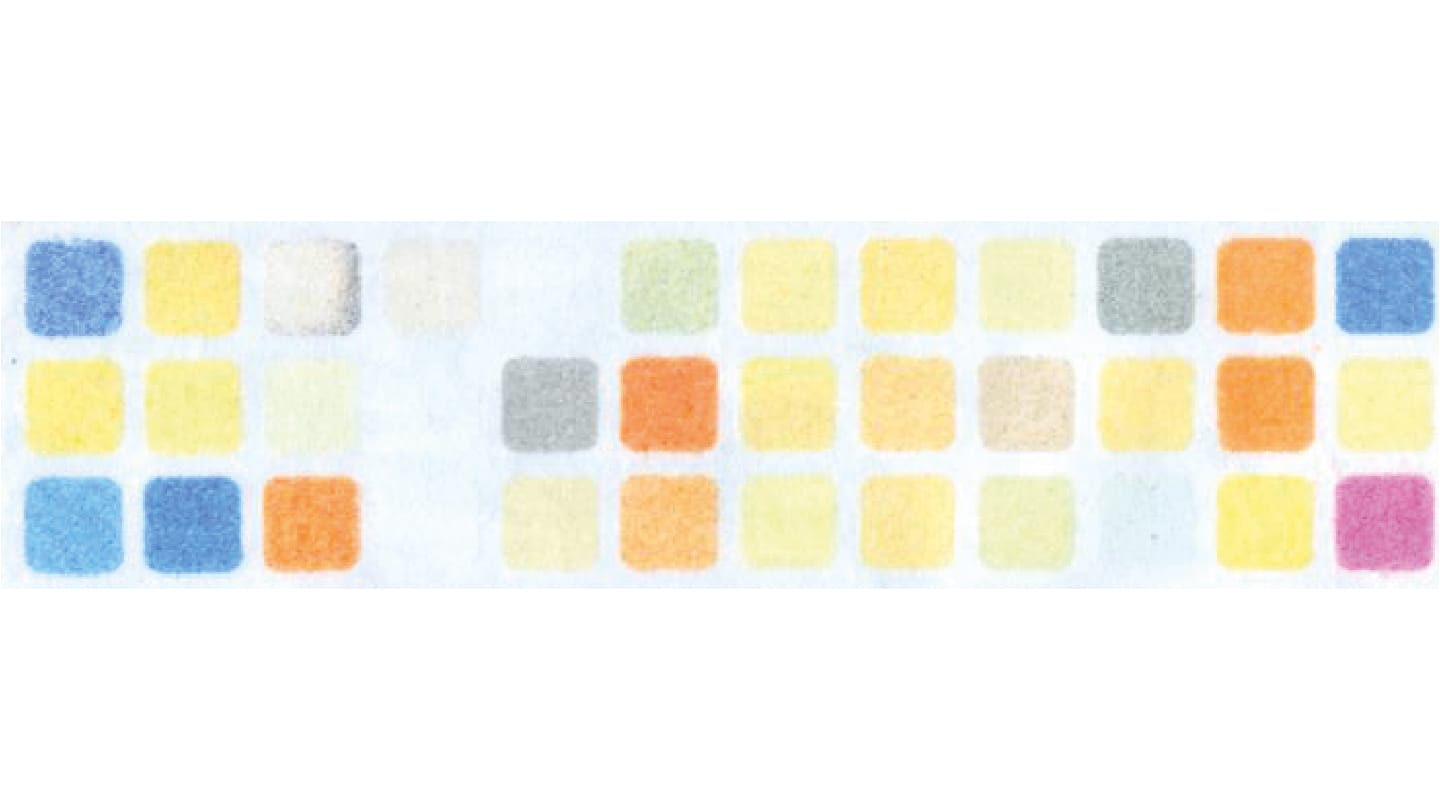
A newly-developed paper-based colorimetric sensor array fabricated using self-adhesive paper and dye-loaded silica particles can detect 12 chemical threat agents – from industrial toxins to simulants of chemical warfare compounds.
The researchers from VERTOX Laboratory, India, used an emboss process to produce highly uniform chips at less than 20 cents apiece. When coupled with image-based analysis, the sensors provide rapid, reproducible, and simultaneous identification across a wide range of analytes, offering a low-cost platform for field detection and emergency response.
To find out more about the technology, its development, and its potential applications, we spoke with Vijay Tak, lead author of the study.
Could you explain how your color-changing sensor array works?
The concept of color-changing arrays is inspired by the mammalian olfactory system. The mammalian olfactory system consists of nearly one thousand receptors, and it can differentiate billions of fragrances based on the pattern recognition process. Unlike the conventional “lock-and-key” system, where a single receptor interacts with a single analyte in a highly specific manner, the mammalian olfactory system works on the principle of semi-selectivity. Here, one analyte can interact with many receptors, generating a unique fingerprint pattern. This unique fingerprint pattern is decoded and processed by the brain, enabling the recognition of even minute differences in fragrances.
In 1982, K. Persuad pioneered the first attempt to mimic the biological smell system by employing three different metal oxides to differentiate a wide variety of the odors, an approach widely known as the “electronic nose.” In such systems, interactions are purely physical in nature, which makes them prone to environmental interferences, particularly from humidity. Moreover, their differentiation ability remains limited due to the relatively small number of sensing units available.
To overcome these hurdles, Prof. K. Suslick introduced the concept of the optoelectronic nose in 2009, where multiple colorimetric dyes serve as sensing units instead of metal oxides. The sensing units are arranged in a particular fashion, generally called a colorimetric sensor array chip, a main component of the optoelectronic nose. The second component is the reader device, which typically consists of a micropump, an image sensor and a processor. When exposed to different chemicals, the sensing units change their color based on their interaction. By simply subtracting the images captured “before exposure” and “after exposure,” unique fingerprints in terms of red, green, and blue components can be generated. These fingerprints are then rapidly interpreted by machine learning-enabled processors.
Inspired by the concept of optoelectronic nose, we have developed our own cost-effective embossed version of the colorimetric sensor array chip in a facile manner, designed specifically to detect twelve chemical threat agents, including toxic industrial chemicals and simulants of chemical warfare agents.
What motivated your team to develop a low-cost, paper-based approach for detecting poisonous gases, and what key challenges did you have to overcome?
The potential of optoelectronic noses is evident from the growing number of research articles across diverse fields, including defence applications. Despite its potential, commercialization on a large scale has yet to be realized. We believe that the primary challenge lies in the complexity of fabricating colorimetric sensor array chips. This process requires the precise arrangement of multiple sensing units on a support material in a reproducible and cost-effective manner. Traditionally, such precision demands a robotic printer that costs more than a hundred thousand dollars, a major obstacle for widespread adoption.
After experimenting with many ideas in the laboratory for more than a year, we discovered a simpler and cost-effective alternative: the use of self-adhesive paper as a platform to reproducibly arrange sensing units without the need for a robotic printer. The key requirement was to have the sensing units in a dry, free-flowing form. To achieve this, our team impregnated mesoporous silica particles with sensing dyes. Once the solvent evaporated, the particles became free-flowing sensing units. In this way, we produced thirty-six sensing units for our application. By placing them in a micro-well plate and pressing the adhesive side of self-adhesive paper onto it, we were able to emboss the particles onto the paper. With a simple rotation of the plate and paper together, the sensing units transferred in a highly reproducible pattern.

Were there any key breakthroughs or unexpected findings during the research?
The most significant breakthrough in our work is the realization that self-adhesive paper could be used in place of a robotic printer for the arrangement of sensing units in a very reproducible manner. As a result, the cost of sensing a chip is reduced to less than 20 cents. Surprisingly, by the simple integration of a self-adhesive with free-flowing dye-loaded silica particles using a micro well plate, we could produce highly uniform sensing chips.
Another unexpected finding was the robust adhesion of the embossed particles on the self-adhesive paper without further modification of glue properties. During the exposure experiments, we expected particle detachment from the paper surface, but the embossed sensing chip showed good reproducibility.
Now, we have a strong belief that this simple and scalable fabrication process has potential to accelerate the research, especially in the field of gas sensing.
How does your method compare to traditional gas sensors?
Traditional gas sensors work on a one-analyte, one-sensor concept. Their single analyte detection capability places an extra burden on first responders during chemical emergencies, as multiple sensors are required to cover a wide range of chemical threats. In contrast, our colorimetric sensor array chip offers multiple analyte detection capability, generating a unique fingerprint for each chemical and enabling fast, simultaneous identification of a broad range of threat agents.
What are the next steps for bringing this technology out of the lab and into real-world applications, and how adaptable is it for detecting other chemical threats?
Motivated by this research work, we are now working on the development of a machine learning-enabled universal reader device that can be easily adapted for different configurations of sensing chips. Moreover, we are focusing on improving the room-temperature storage stability of the sensor chip, a key step toward real-world deployment.
With simple modification of sensing units through indicator chemistry optimization, this platform can easily be tailored not only for other chemical threats but also for environmental contaminants, industrial pollutants, and hazardous gas. Looking ahead, we envision that these low-cost sensing chips will make optoelectronic devices widely accessible for the rapid and reliable detection of chemical threat agents.



